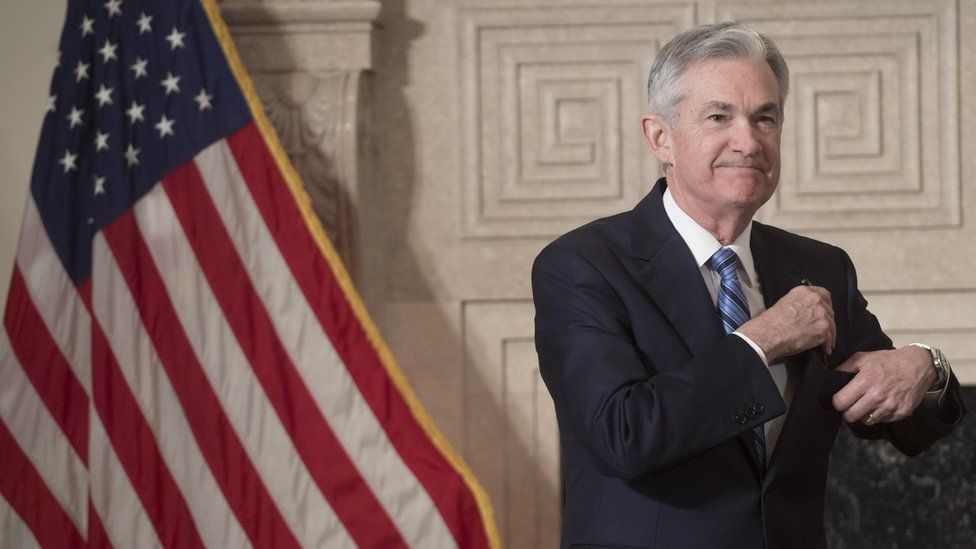Federal Reserve raises interest rates
- Published

The US Federal Reserve has voted to raise the target for its benchmark interest rate by 0.25%, citing solid economic expansion and job gains.
The widely-anticipated decision will lift the target for the central bank's benchmark rate to 1.75%-2%, the highest level since 2008.
A majority of Fed officials also forecast two more rate rises this year, one more than previously predicted.
The rise is part of the US recovery following the global financial crisis.
It is the seventh time the bank has raised rates since 2015.
The tighter policy reflects expectations that US growth and inflation will prove stronger than officials anticipated in March, while the unemployment rate continues to fall.
Federal Reserve Chair Jerome "Jay" Powell said job gains are boosting income and confidence, while foreign expansion and tax cuts support additional growth.
"The main takeaway is that the economy is doing well," he said.
Projections released after the Fed's two-day meeting in Washington show policymakers expect the US economy will grow 2.8% this year, while unemployment falls to 3.6%.
They expect the core inflation rate to rise to roughly 2% this year.
Mr Powell said concerns about trade are rising and the bank has received anecdotal reports that the uncertainties are leading companies to hold off on investment and hiring.
But, he added, "We really don't see it in the numbers."
Analysis: BBC economics correspondent Andrew Walker
This is another step on the road back to normal after the emergency measures taken following the financial crisis of 2008.
The US has gone further down this path than the other largest developed economies. The central banks in Japan and the Eurozone still have their main rates at or close to zero. Both are still actively undertaking quantitative easing, a policy of creating new money to buy financial assets in an effort to boost economic activity.
The Fed stopped that in 2014 and has made a start on reducing its holdings of trillions of dollars' worth of assets. That reflects the fact that the US recovery after the crisis has been stronger, and inflation is getting closer to the Fed's target.
All three central banks (and the Bank of England) aim for inflation of about 2%, but in Japan and the Eurozone prices are rising substantially more slowly. In the UK, the Bank has stopped actively buying financial assets and interest rates are up a little from their lows.
The British position has however been complicated by the referendum on membership of the European Union and a spike in inflation that followed the decline in the pound after the vote.
Declaring victory?
The decision to raise rates comes as the US unemployment rate hovers at 3.8% - the lowest rate in nearly two decades - and inflation, which lagged the Fed's 2% target for years, shows signs of starting to pick up.
The bank's preferred indicator of inflation, consumer spending figures, showed annual inflation rose 2% in April or 1.8% if energy and food were excluded.
Mr Powell called the figures "encouraging" but said the bank wants to see the economy sustain that rate of inflation before it declares victory.
Overall, he noted, the economy is in a much improved position than it was just a few years ago, as the US slowly emerged from the financial crisis and recession.
"The decision you see today is another sign that the US economy is in great shape," he said, adding that the bank continues to favour a gradual approach to raising rates.
Consumer impact
The higher rates should be a boon for savers, but they will increase borrowing costs for households and businesses throughout the economy.
Greg McBride, chief financial analyst for the interest rate website Bankrate.com, said that could "squeeze" families if wage growth remains sluggish.
Analysts say the higher rates have also contributed to turmoil in some emerging markets. Low rates had prompted investors to pour money into riskier overseas markets in recent years in search of returns.
- Published13 June 2018
- Published1 June 2018
- Published30 May 2018